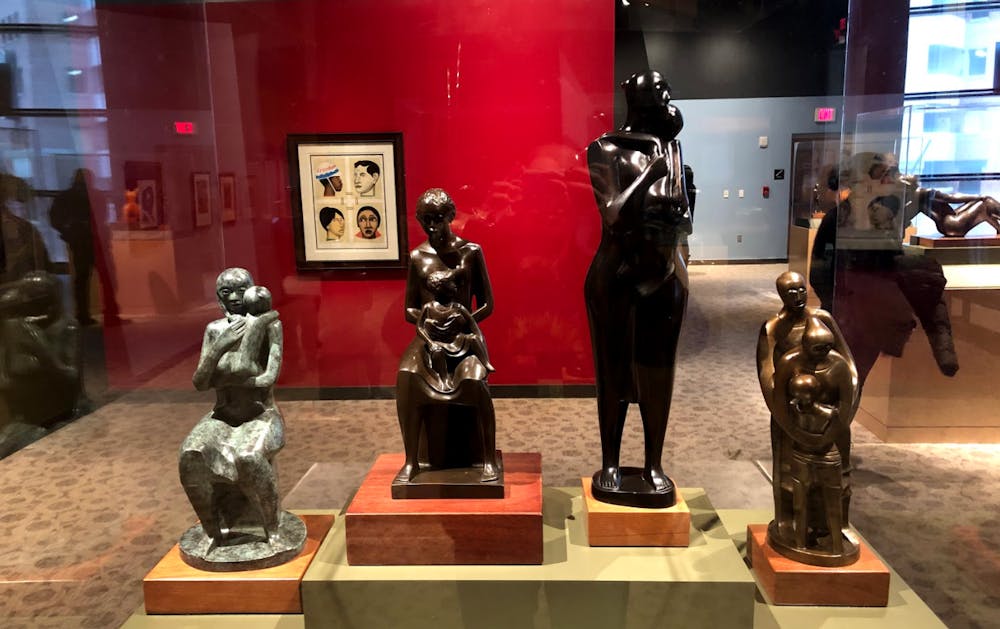The Reginald F. Lewis Museum of Maryland African American History and Culture hosted Hopkins Day on Saturday, offering all University affiliates free admission. Renowned curator Lowery Stokes Sims presented on the exhibition on artist Elizabeth Catlett, explaining the relationships between Catlett’s artwork and black and Latin American history.
Sims described Catlett’s representations of female empowerment in her art.
“She had this reputation, especially among black artists, of being a person of incredible integrity and tough as hell,” Sims said. “You didn’t mess with Elizabeth.”
Sims stated that Catlett, who was born in 1915 and attended the University of Iowa, faced discrimination in the college admissions process due to being both female and African American. Although Catlett began as a teacher, Sims said, she met various individuals during her education who later influenced her art.
According to Sims, Catlett is known for her focus on black women’s figures and sculpted nude torsos.
Freshman Victor Ke praised Catlett’s ability to imbue every piece of work with immense meaning, beyond solely aesthetic enjoyment.
“Some of her pieces were very simple, but they really conveyed a deeper, more personal meaning,” Ke said.
Sims described Catlett’s representation of mothers.
“Elizabeth always emphasized the physical strength of mothers, focusing our attention on their hips, thighs and legs,” Sims said.
Freshman Ana Rosu enjoyed parts of Catlett’s work apart from her depictions of female bodies, which she thought were overexamined.
“Because everything is often shown from the male perspective and because motherhood and having children are always shown, I just feel there could be more shown than just that,” Rosu said. “Women do more than just have children.”
However, Sims saw this differently, arguing that Catlett evoked the femininity of strong women in a refreshing manner.
“Despite her emphasis on the physique of the women, her focus is not sexual in nature but rather cultural and conceptual, in line with her consistent celebration of the strength of women, whether physically, mentally, emotionally or psychologically,” Sims said.
Sims highlighted Catlett’s inspirational role as an activist and how this was reflected in her artwork’s subjects. Catlett chose to celebrate lesser-known women, she said, while also memorializing black history.
Brian Scott Bagley, a volunteer at the museum, commented on Catlett’s history of activism. He mentioned how she protested with railroad workers in Mexico City, resulting in the revocation of her U.S. citizenship.
“People who are taking risks are activating that hero inside of themselves. I appreciate her being ... an inspiration to all of us,” he said.
Sims finished her presentation by reading a letter that Catlett wrote to Samella Lewis, another black artist.
“‘We know the deprivations that exist in the black community and how mental and emotional frustrations lead to wasted lives. If we can enrich the life of one black man, woman or child, then we have fulfilled our function as art producers. Artists are the sensitive area of the community and can clarify so many things,’” Sims said, quoting Catlett. “‘We can project the beauty of our people, the grace, the rhythm, the dignity. We can explain frustrations and stimulate joy. The artist must be an integral part of the totality of black people.’”





